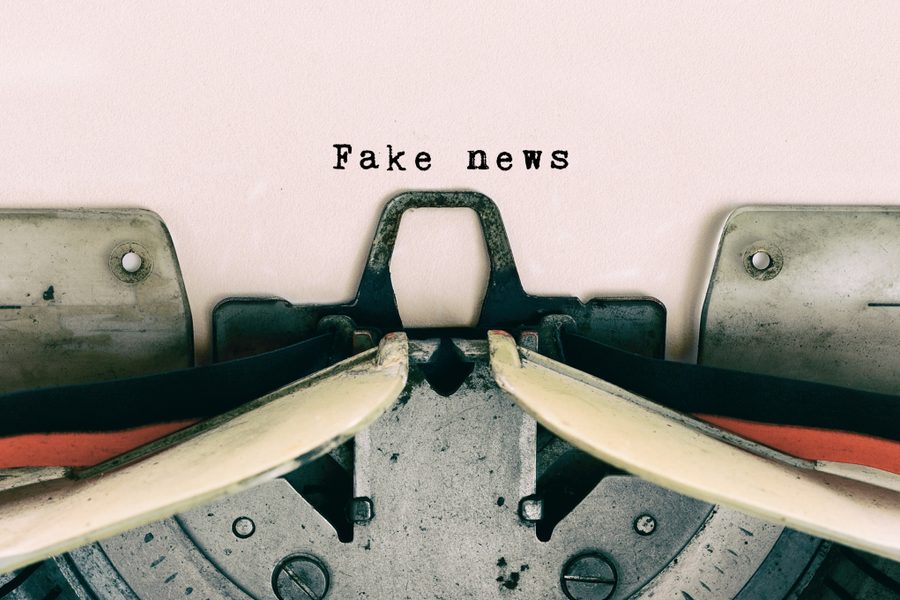How the “Fake News” Scare Is Marginalizing the Left
Unaccountable tech companies are defining the parameters of acceptable discourse.
Julianne Tveten

Last month, the Russia-Fearmongering-Industrial Complex grew ever greater when reports surfaced that Russian actors had purchased more than $100,000 worth of political ads to display on Facebook. News outlets reported that the ads were designed to criticize Hillary Clinton while bolstering support for Jill Stein, Bernie Sanders and Donald Trump — and to lure right-wing votes via appeals for the rights of gun owners.
Even without confirmation of Russia connections, CNN, The Washington Post, Politico, The New York Times and other media sources have been resolute in their attempts to cast the ads as shadowy propaganda designed to prey on U.S. Facebook users. In the process, they’ve postulated noxious canards — namely, the suggestion that racial-justice organizing is a product of Russian machinations — and left the ads’ origins and aims nebulous.
In characterizing the ads as menacing mirrors of right and left ideologies, mainstream media’s message remains clear: Only the corporate-sponsored center can be trusted.
The narrative is one of the latest stirrings of the panicked spectacle that is “Fake News.” In the wake of the 2016 election, pundits pointed their fingers at Facebook, Google and Twitter, accusing them of spreading misinformation about political issues and figures to the U.S. voting citizenry. A circuitous, concern-trolling tactic, the Fake News scare soon gained momentum among corporate media outlets and politicians seeking to find palatable scapegoats for the stunning election of Donald Trump.
When the pressure grew too high to ignore the calls for Fake News containment, the Internet giants took action. Google began to stymie ads it deemed dubious. Facebook floated features to flag Fake News and tweaked its ad policy. Months later, Twitter joined the chorus, essentially echoing Facebook’s approach.
These adjustments, however, haven’t stifled propaganda. On the contrary, they may have stifled dissent. Since Google’s algorithmic updates in April, a number of left-wing sites have seen their search traffic plummet. The World Socialist Web Site (WSWS) reported a 67 percent dip in traffic between April and July of this year, with a total decrease of 85 percent since Google implemented changes. (Its editorial chairman David North recently spoke about this to The New York Times.) Left-leaning sites Alternet, Democracy Now, Common Dreams, Global Research and Truthout have suffered similar declines, WSWS reported, ranging from 49 to 71 percent. Alternet and Global Research have issued additional laments, the former claiming to have lost an average of 1.2 million of the 2.7 million unique visitors the site receives from search traffic each month since June.
This may sound familiar. Last year, The Washington Post linked to the now-infamous promulgations of neo-McCarthyist organization PropOrNot, which classified Truthout, and other left-leaning news sources as potential Russian propaganda agents. (The Post did not name any sites in its story.) Meanwhile, centrist news organizations have borne no such brunt. The Washington Post, for example, has boasted statistics of 74 to 92 million monthly visitors, thanks in no small part to the corporate web. “Internet users doing searches on Google, since the algorithms were put in place, are diverted from sites such as Truthdig and directed to mainstream publications such as The New York Times,” journalist Chris Hedges wrote in September.
Such developments underscore the perils of relying on private technology companies to regulate political content. In March, Eric Schmidt, the billionaire chairman of Google’s parent company Alphabet, assured the Fox Business viewership that technology could indeed detect Fake News, suggesting that the best methods would be a matter of companies’ furtive discretion. “It should be possible for computers to detect malicious, misleading, and incorrect information and essentially have you not see it,” Schmidt said. “We’re not arguing for censorship. We’re arguing, just take it off the page.”
Google-styled censorship is acceptable, Schmidt implied, as long as it’s preemptive. If the claims of WSWS and AlterNet are any indication, it’s not hard to imagine the search behemoth’s interest in silencing voices that condemn the corporate structures that have allowed its success. In light of Google’s recent ousting of a monopoly critic, Barry Lynn, from its think tank, New America, the prospect would seem to grow only more tangible.
What’s more, Facebook and Twitter both have patterns of muzzling activists and people of color while protecting white men. As ProPublica has revealed, Facebook has routinely removed posts of those who rebuke white supremacy and police killings of people of color, even when they don’t violate its policies, while classifying white men a “protected category” entitled to more protections from free speech than such “subsets” as black children. Twitter, meanwhile, is loathe to so much as suspend the accounts of neo-Nazis, preferring to verify their most marketable faces and publish their organizations’ ads.
Soon, Twitter will face Congress over a network of Russia-linked accounts promoting such hashtags as #boycottnfl, #standforouranthem and #takeaknee, as well as news stories with “a primary theme of anti-Americanism.” Some of these stories, according to The New York Times, connected Hillary Clinton to such events as the terrorist attack in Benghazi and focused on wiretapping in the federal investigation of former Trump campaign chairman Paul Manafort. (In the same handwringing report, the Times fretted about Vladimir Putin’s plan to “darken the image of the United States.”)
Veracity aside, the cardinal sin of these accounts, pundits imply, is their aforementioned “anti-Americanism”: their audacity to attempt to manipulate the public and to “undermine democracy.” Likely a euphemistic way to lambast unsavory messaging about centrist status-quo avatar Hillary Clinton, such an accusation is essentially a baseless exaggeration. As Aaron Maté recently noted in The Nation, the number of accounts under suspicion — 200 — pales in comparison to Twitter’s 328 million users. “To suggest 200 accounts out of 328 million could have had an impact is as much an insult to common sense as it is to basic math,” Maté wrote. The Facebook case offers an analogue: “A $100,000 Facebook ad buy,” according to Maté, “seems unlikely to have had much impact in a $6.8 billion election.”
Still, to atone for hosting such apparent affronts to U.S. integrity, Twitter has sought aid from U.S. intelligence agencies “in trying to find and stop illicit interference from other countries,” the Times notes. Meanwhile, Facebook has delivered its ads to Congress, including the Senate and House Intelligence committees.
The U.S. public has never quite learned the criteria of Fake News, nor has it received a coherent, conclusive explanation of exactly what Russia did. The U.S. public has, however, been given a crash course in corporate, centrist boosterism. Anxieties over the roles of Facebook, Google and Twitter in disseminating of Russian-engineered Fake News have merely posited the corporate state’s centrism as gospel and antagonized the Left in increasingly sophisticated ways. Furthermore, the proposed technocratic solution of relying on these unaccountable megacompanies to determine what information they broadcast will only exacerbate the problem.
As tech companies prepare to cooperate with intelligence agencies, and their owners inch closer to steering corporate media both indirectly and directly, it becomes ever more urgent to recognize the irony of it all: Centrist alarmism doesn’t destroy harmful propaganda — it creates it.
A previous version of this article incorrectly stated that Alternet had been listed as fake news by the group PropOrNot, and that the site had lost 1.2 million of its 2.7 million unique monthly visitors. These figures actually reflect the monthly visitors the site receives from search traffic. The story has been updated to correct these errors.







